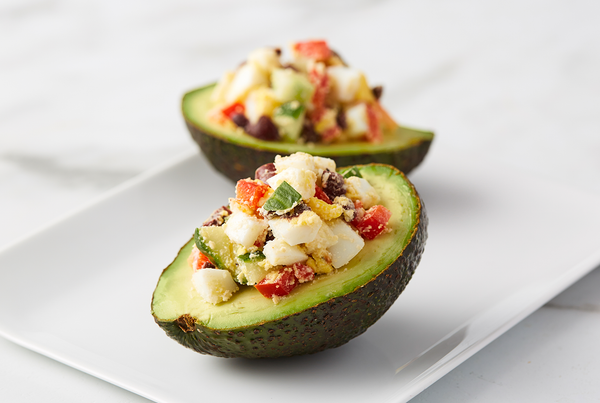Curious about trying a keto*-friendly diet, but apprehensive based on some of the media headlines you’ve heard surrounding it? Don’t worry, we got you. We worked with a registered dietitian nutritionist (RDN) here at :ratio to debunk some of the biggest myths surrounding the keto diet. Read on to get the answers you’ve been craving.
1. The Keto Diet is Just For Weight Loss
While the keto diet has been popularized for its potential for weight loss, it has also been shown to have other health benefits. Interestingly enough, the ketogenic diet was originally invented for therapeutic purposes to manage some health conditions. If you are looking for a diet that can help address specific health concerns, ask your doctor if a keto diet is right for you!
2. You Can Consume All The Fat You Want On Keto
Although the keto diet requires a high intake of dietary fat, it does not mean that you can consume an unlimited amount of fat. It is important to consume good-for-you sources of fat, such as avocados, nuts and olive oil, while also staying within your calorie and macronutrient goals. Check out our top 10 dietitian approved keto*-friendly fats.

3. You Can't Consume Alcohol On Keto
Alcohol can be consumed in moderation on the keto diet, but it is important to choose low-carb options. Beer and sweetened cocktails are higher in carbohydrates than other options. If you’re looking for an alternative alcoholic beverage on a keto*-friendly diet, spirits like vodka, gin and tequila are lower in carbohydrates and when consumed in moderation, can work in your meal plan. However, it’s important to note that excessive alcohol consumption (i.e., greater than 1 standard drink per day for women and 2 for men) comes with its own health risks.

4. You Can't Eat Fruits and Veggies On Keto
While a keto*-friendly diet limits the intake of carbohydrates, it does not mean that you cannot consume fruits and vegetables. Non-starchy vegetables like leafy greens, broccoli and cauliflower are low in carbohydrates and can (and dare we say should) be consumed regularly. Fruits like berries and avocados are also fairly low in carbohydrates and can be included in moderation.
5. You Have To Fast For Hours On Keto
Although intermittent fasting can be combined with a keto*-friendly diet, we don’t recommend this approach. According to the National Library of Medicine, it is not necessary to fast for hours in conjunction with a keto*-friendly diet to see the results you may be hoping for. Simply following a low-carbohydrate, high-fat diet can induce a state of ketosis without the need to fast. Instead, use the keto*-friendly strategies we’ve covered for you here. You can easily (and successfully) nourish your body throughout the day without ever having to fast. We want you to feel satisfied and satiated on your new eating plan, not deprived!
Do What's Best For You
Hopefully this article helped to debunk some of the keto myths you may have heard. While we are not suggesting the ketogenic diet is suitable for everyone, when practiced appropriately, it can be a safe and effective eating plan to follow short-term. However, there are always going to be misconceptions surrounding any restrictive diet, so we suggest trying what feels right for you and consulting a physician or trained registered dietitian nutritionist before doing so.
*Always consult your physician before starting an eating plan that involves regular consumption of high-fat foods.






